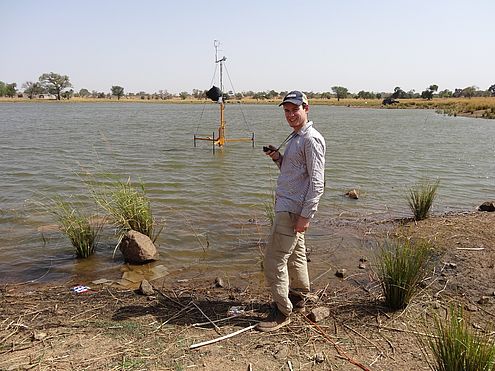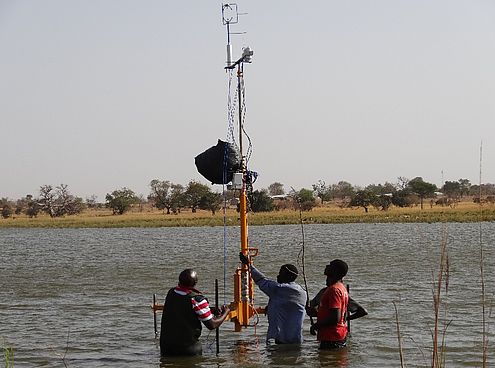Evaporation in small Ghanaian reservoirs
Erik van Duijn
Part of the PhD study of mr. Frank Annor, I did my bachelor thesis in Bolgatanga, Ghana. The research is about the development of the boundary layer above small reservoirs. To determine this effect, it was my assignment to determine the evaporation rate in the reservoir. During the dry season, a lot of water evaporates and the chance of shortage is very high. One way to deal with this is to build a lot of (small) reservoirs. The problem with that is that the local chiefs are not very convinced of this solution, due to the fact that their land will be used, which they can not use for other purposes. The purpose of my thesis was to determine the actual evaporation rate and to give a recommendation to the Ghanaian people for the ideal dimensions of a small reservoir to get through the dry season without wasting land surface. This was done on the basis of a method proposed by Vercauteren et al.. To check the accuracy of this method a comparison with calculations with the energy balance were made. Although it did not match perfectly, due to the determination of the ground heat flux, some interesting similarities appeared. Also the influence of the stability of the atmosphere was shortly investigated. It appeared that this has a sufficient effect on the evaporation in the small reservoirs. From the measurements the daily evaporation appeared to be 2 - 6 millimeter per day, whereas theoretically a potential evaporation of 10 millimeters per day is calculated with pan measurements. From satellite measurements daily evaporation rates of 3 – 4 millimeters per day are measured. It appears that Vercauteren et al. have come up with a good method and is very useful in determining evaporation. Given those results we hoped to have sufficient information to convince the chiefs about building more small reservoir.


